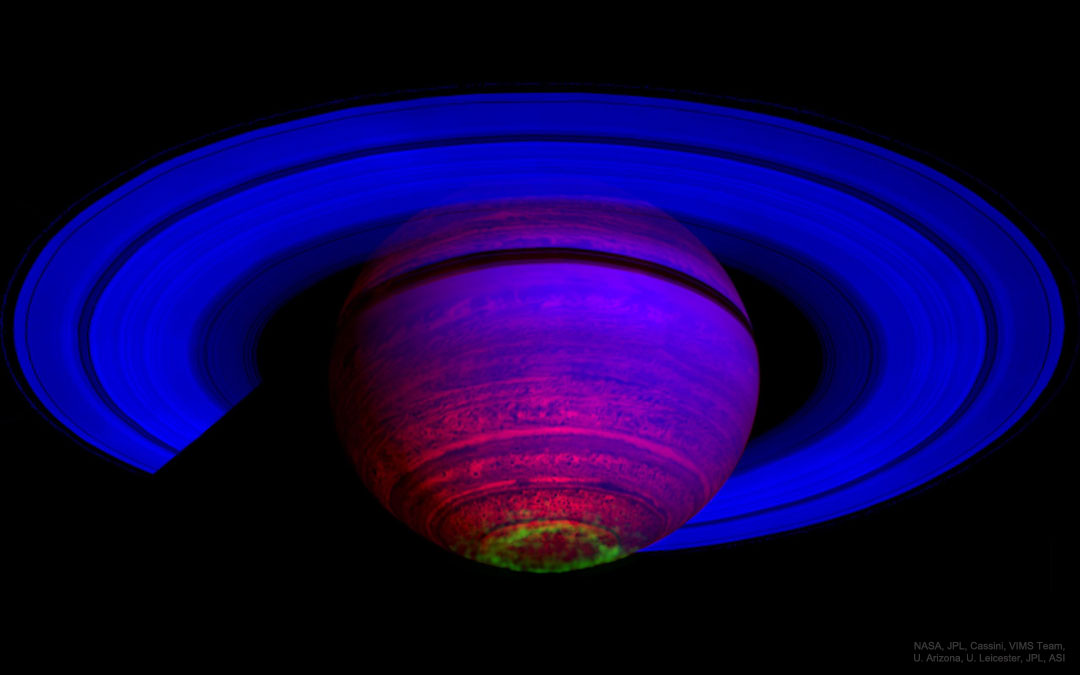2021年06月27日
The Dancing Auroras of Saturn
Image Credit: NASA, Cassini, VIMS Team, U. Arizona, U. Leicester, JPL, ASI
Explanation: What drives auroras on Saturn? To help find out, scientists have sorted through hundreds of infrared images of Saturn taken by the Cassini spacecraft for other purposes, trying to find enough aurora images to correlate changes and make movies. Once made, some movies clearly show that Saturnian auroras can change not only with the angle of the Sun, but also as the planet rotates. Furthermore, some auroral changes appear related to waves in Saturn’s magnetosphere likely caused by Saturn’s moons. Pictured here, a false-colored image taken in 2007 shows Saturn in three bands of infrared light. The rings reflect relatively blue sunlight, while the planet itself glows in comparatively low energy red. A band of southern aurora in visible in green. In has recently been found that auroras heat Saturn’s upper atmosphere. Understanding Saturn’s auroras is a path toward a better understanding of Earth’s auroras.
Tomorrow’s picture: paper moon eclipse
土星跳动的极光
影像提供: NASA, Cassini, VIMS Team, U. Arizona, U. Leicester, JPL, ASI
说明: 土星的极光是如何产生的?为找出答案提供助力,科学家检视了卡西尼号太空船,因其他目标拍摄的数百张土星红外光影像,试着找出极光变化相关性并制成影片。所制作的部分影片,清楚证实土星极光的变化,不仅仅与阳光入射角有关,也与土星的转动运动有关。此外有一些极光变化,源自土星卫星造成的土星磁层波动。这张摄于2007年的假色影像,是由三个红外光波段照片所组成。其中,土星环反射的光较偏蓝,行星本身散发相对低能量的红光,而南极的极光则是泛绿。最近的研究更发现,极光会加热土星的上层大气。经由研究土星极光,也会对地球的极光有更深入的了解。
明日的图片: paper moon eclipse







